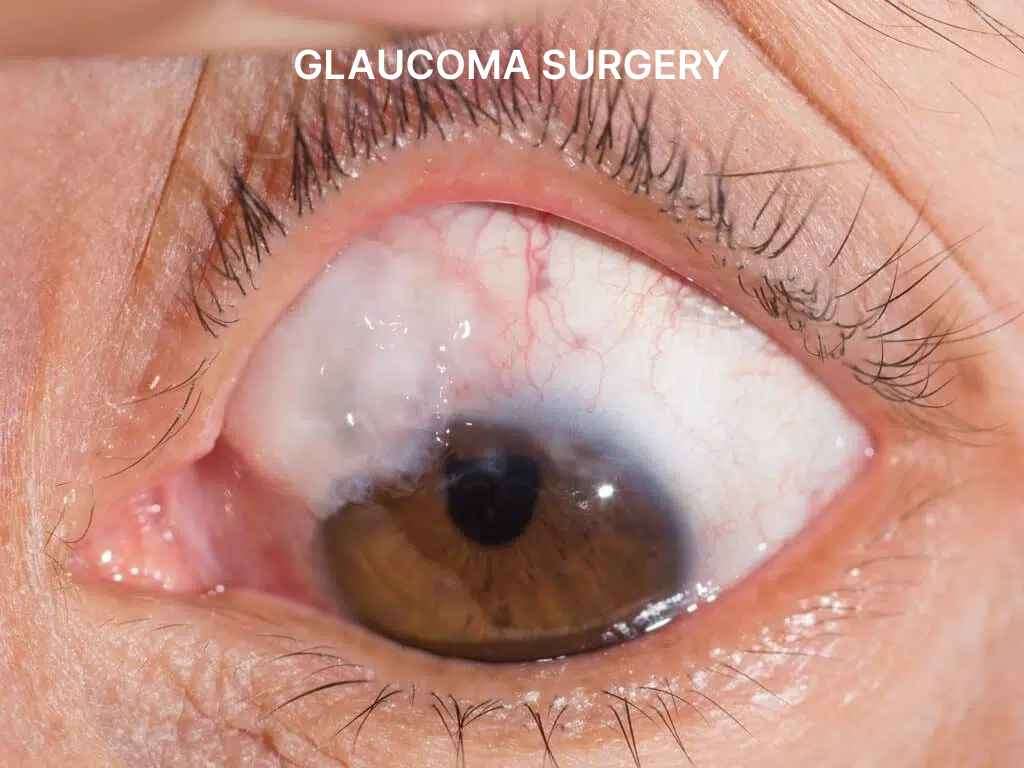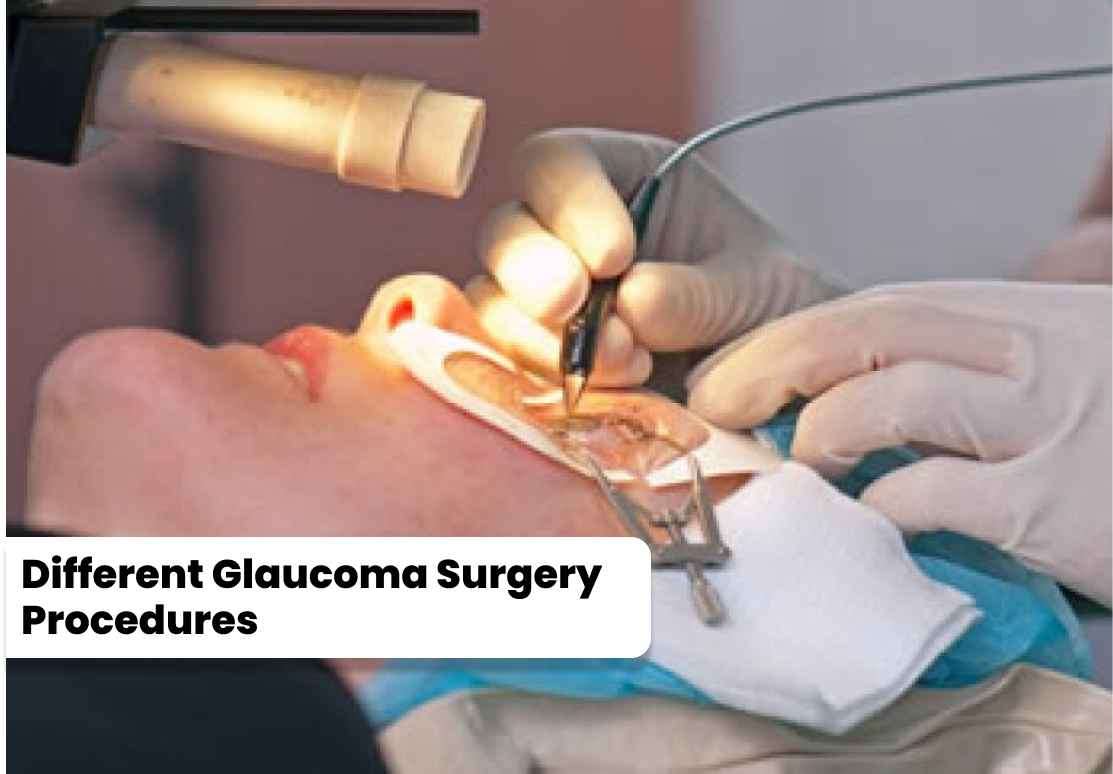Glaucoma is a group of eye conditions characterized by damage to the
optic nerve, which can lead to vision loss or blindness if left
untreated. The main goal of glaucoma treatment is to lower intraocular
pressure (IOP) to prevent or slow down the progression of the disease.
Call us to book a appointment with the best eye specialist near you.
Glaucoma surgery and treatment involve
various techniques and approaches to manage and control glaucoma, a
group of eye conditions that can cause damage to the optic nerve and
result in vision loss if left untreated. The main goal of glaucoma
treatment is to lower intraocular pressure (IOP), as elevated IOP is a
significant risk factor for optic nerve damage.

Glaucoma surgery and treatment involve
various techniques and approaches to manage and control glaucoma, a
group of eye conditions that can cause damage to the optic nerve and
result in vision loss if left untreated. The main goal of glaucoma
treatment is to lower intraocular pressure (IOP), as elevated IOP is a
significant risk factor for optic nerve damage.
1. Medications The first line of treatment for glaucoma often involves eye drops or oral medications. These medications work by reducing the production of aqueous humor (the fluid inside the eye) or improving its drainage, thereby lowering IOP. Commonly prescribed medications include prostaglandin analogs, beta blockers, alpha agonists, and carbonic anhydrase inhibitors. 2. Laser Therapy Laser treatments can be used to manage glaucoma by improving the drainage of aqueous humor. These procedures are typically performed in an outpatient setting and are relatively quick and painless. The two main types of laser therapy for glaucoma are:
Trabeculoplasty: In this procedure, a laser is used to open up and enhance the function of the drainage angle in the eye, allowing better outflow of fluid. Cyclophotocoagulation: This laser treatment targets the ciliary body, which produces aqueous humor. The laser reduces the production of fluid, thereby lowering IOP. 3. Minimally Invasive Glaucoma Surgery (MIGS) MIGS procedures are a newer category of glaucoma surgeries that are less invasive than traditional surgeries. They aim to improve the outflow of aqueous humor and lower IOP. Some common MIGS procedures include:
iStent: This tiny implant is inserted into the drainage system of the eye to facilitate fluid drainage. Trabectome: It involves removing a portion of the trabecular meshwork (a drainage structure in the eye) to improve fluid outflow. Xen Gel Stent: A gelatin stent is placed in the eye to create a new drainage pathway for the fluid. 4. Filtering Microsurgery In cases where medications and laser therapy are insufficient, traditional glaucoma surgeries may be necessary. These procedures involve creating a new drainage pathway for the aqueous humor by creating a small hole or "filter" in the eye. The most common type of filtering microsurgery is called trabeculectomy. During trabeculectomy, a small flap is created in the sclera (white part of the eye), allowing fluid to drain out and form a filtering bleb, which is a reservoir for the fluid. Sometimes, a glaucoma drainage implant, such as a tube shunt, may be used instead of a trabeculectomy. 5. Cycloablation
In cases of severe glaucoma that is not responsive to other treatments, cycloablation may be considered. It involves destroying a portion of the ciliary body using laser or freezing methods, which reduces the production of aqueous humor and lowers IOP.

1. Medications
The first line of treatment for glaucoma often involves eye drops or oral medications. These medications work by reducing the production of aqueous humor (the fluid inside the eye) or improving its drainage, thereby lowering IOP. Commonly prescribed medications include prostaglandin analogs, beta blockers, alpha agonists, and carbonic anhydrase inhibitors.
2. Laser Therapy
Laser treatments can be used to manage glaucoma by improving the drainage of aqueous humor. These procedures are typically performed in an outpatient setting and are relatively quick and painless. The two main types of laser therapy for glaucoma are:
Trabeculoplasty: In this procedure, a laser is used to open up and enhance the function of the drainage angle in the eye, allowing better outflow of fluid.
Cyclophotocoagulation: This laser treatment targets the ciliary body, which produces aqueous humor. The laser reduces the production of fluid, thereby lowering IOP.
3. Minimally Invasive Glaucoma Surgery (MIGS)
MIGS procedures are a newer category of glaucoma surgeries that are less invasive than traditional surgeries. They aim to improve the outflow of aqueous humor and lower IOP. Some common MIGS procedures include:
iStent: This tiny implant is inserted into the drainage system of the eye to facilitate fluid drainage.
Trabectome: It involves removing a portion of the trabecular meshwork (a drainage structure in the eye) to improve fluid outflow.
Xen Gel Stent: A gelatin stent is placed in the eye to create a new drainage pathway for the fluid.
4. Filtering Microsurgery
In cases where medications and laser therapy are insufficient, traditional glaucoma surgeries may be necessary. These procedures involve creating a new drainage pathway for the aqueous humor by creating a small hole or "filter" in the eye. The most common type of filtering microsurgery is called trabeculectomy. During trabeculectomy, a small flap is created in the sclera (white part of the eye), allowing fluid to drain out and form a filtering bleb, which is a reservoir for the fluid. Sometimes, a glaucoma drainage implant, such as a tube shunt, may be used instead of a trabeculectomy.
5. Cycloablation
In cases of severe glaucoma that is not responsive to other treatments, cycloablation may be considered. It involves destroying a portion of the ciliary body using laser or freezing methods, which reduces the production of aqueous humor and lowers IOP.
The cost of glaucoma surgery can vary significantly depending on various factors such as the type of surgery, the location, the surgeon's expertise, the facility where the surgery is performed, and any additional procedures or treatments required. Additionally, healthcare costs can change over time, so it's essential to consult with specific medical providers or healthcare facilities for up-to-date information.
|
Serial No |
City |
Minimum cost (INR) |
Average cost (INR) |
|
1 |
Mumbai |
5,000 |
6,000 |
|
2 |
Bangalore |
10,000 |
90,000 |
|
3 |
Hyderabad |
10,000 |
27,500 |
|
4 |
Chennai |
4,000 |
37,000 |
|
5 |
Delhi |
26,800 |
35,900 |
|
6 |
Ahmedabad |
7,000 |
53,500 |
|
7 |
Kolkata |
3,000 |
39,000 |
|
8 |
Lucknow |
4,000 |
27,000 |
|
9 |
Pune |
2,500 |
21,250 |
|
Serial No |
Hospital name |
Address |
Contact number |
|
1 |
New Age Wockhardt Hospital |
1877, Doctor Anandrao Nair Marg, Mumbai Central East Mumbai - 400011 |
+91 8291101001 |
|
2 |
Center for Sight |
B-5/24, Safdarjung Enclave, New Delhi - 110029 |
+91 1145738888 |
|
3 |
Apollo Hospitals |
21, Greams Lane, Chennai - 600006 |
+91 4428293333 |
|
4 |
Eye Q Hospital |
Plot No. 522, Golf Course Road, Near Super Mart I, Sector 27, DLF Phase IV, Gurgaon - 122009 |
+91 7824015453 |
|
5 |
Aditya Eye Hospital & LASIK centre |
Maharashtra Housing Board, Maharashtra Co-Operative Housing Society, Yerawada, Pune - 411006 |
+91 7798507489 |
|
6 |
Nelivigi Eye Hospital |
450/435/10, Bellandur-Doddakannelli Road, Outer Ring Road, Bengaluru - 560103 |
+91 8043705050 |
|
7 |
Trinetra Advanced Eye Care |
4/144, Vibhav Khand-4, Gomti Nagar, Lucknow - 226010 |
+91 9721538808 |
Please Wait..